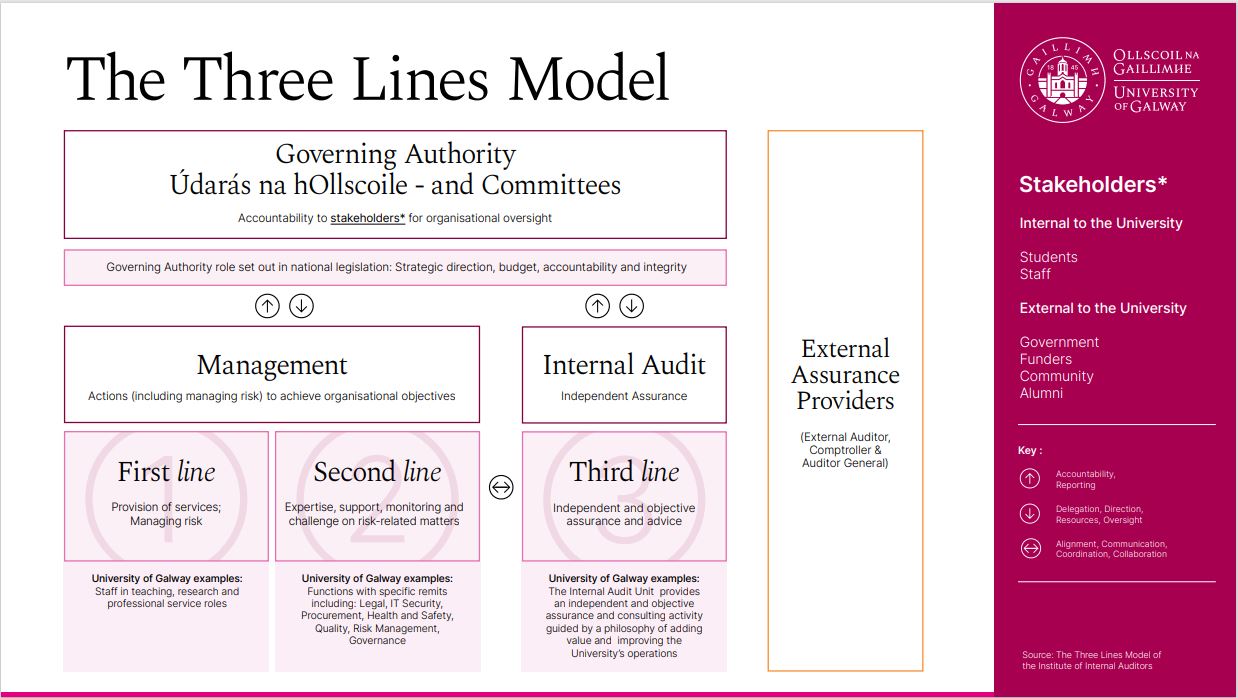-
Courses

Courses
Choosing a course is one of the most important decisions you'll ever make! View our courses and see what our students and lecturers have to say about the courses you are interested in at the links below.
-
University Life

University Life
Each year more than 4,000 choose University of Galway as their University of choice. Find out what life at University of Galway is all about here.
-
About University of Galway

About University of Galway
Since 1845, University of Galway has been sharing the highest quality teaching and research with Ireland and the world. Find out what makes our University so special – from our distinguished history to the latest news and campus developments.
-
Colleges & Schools

Colleges & Schools
University of Galway has earned international recognition as a research-led university with a commitment to top quality teaching across a range of key areas of expertise.
-
Research & Innovation

Research & Innovation
University of Galway’s vibrant research community take on some of the most pressing challenges of our times.
-
Business & Industry

Guiding Breakthrough Research at University of Galway
We explore and facilitate commercial opportunities for the research community at University of Galway, as well as facilitating industry partnership.
-
Alumni & Friends

Alumni & Friends
There are 128,000 University of Galway alumni worldwide. Stay connected to your alumni community! Join our social networks and update your details online.
-
Community Engagement

Community Engagement
At University of Galway, we believe that the best learning takes place when you apply what you learn in a real world context. That's why many of our courses include work placements or community projects.
Internal Governance
Document Hierarchy for the University
The document hierarchy for the University above represents a hierarchy of document categories through which the University governs its operations. The hierarchy is intended to assist staff, students and others in understanding the role of particular categories of documents in supporting effective governance and management of our work. The higher a document is placed in the hierarchy the greater its effect is likely to be in practice. In the event there is a conflict between one document and another placed higher in the document hierarchy the higher placed document takes precedence.The correct categorisation of a document is vital and will depend upon the nature & purpose of the document concerned.
To assist document authors, definitions of each type of documents are available by clicking the hyperlinks in the Document Hierarchy. The Document Hierarchy is also available to download. When drafting a new document, or revising an existing document, the author(s) should review these in order to allocate the document to its correct category within the University’s document hierarchy.
- The author should avoid classifying a document as belonging in a particular category unless it substantially meets the definition of these types of documents as set out below in the definitions section.
- It is important that all categories of document in the hierarchy are carefully drafted and prepared. Once they have been appropriately approved and circulated, it is important that their provisions are followed by all staff.
- Colleagues can contact:
- the Office of the Secretary for Governance & Academic Affairs for assistance with general queries: Email: govandacademicaffairs@universityofgalway.ie
- The Quality Office for specific queries relating to Policies. Email: quality@universityofgalway.ie
University of Galway - the 'Three Lines Model'
The ‘Three Lines Model’ was developed by the Institute of Internal Auditors to help organisations identify structures and processes that best assist the achievement of their objectives and to facilitate strong governance and risk management. The model adopts a principles-based approach and can be applied to all organisations.
:
Under the model, management’s responsibility to achieve the University’s objectives comprises both first and second line roles.
First line roles are most directly aligned with the delivery of services and in University of Galway this involves all staff across teaching, research, or professional service areas.
Second line roles generally provide assistance with managing risk. These are often specialist roles which provide complementary expertise, support, monitoring, and challenge to those with first line roles. Examples of such functions in University of Galway include Quality, IT Security, Legal Affairs, Procurement, Health and Safety, Governance and Risk Management. It is useful to note in that context that local responsibility for managing risk remains a part of first line roles.
:
The third line role is the University’s independent Internal Audit function. It provides independent and objective assurance and advice on the adequacy and effectiveness of governance and risk management. It conducts a programme of internal audit reviews and reports its findings to management and the Audit & Risk Committee of the Governing Authority to promote and facilitate continuous improvement. Further information on the work of the Internal Audit Unit is available here.
















